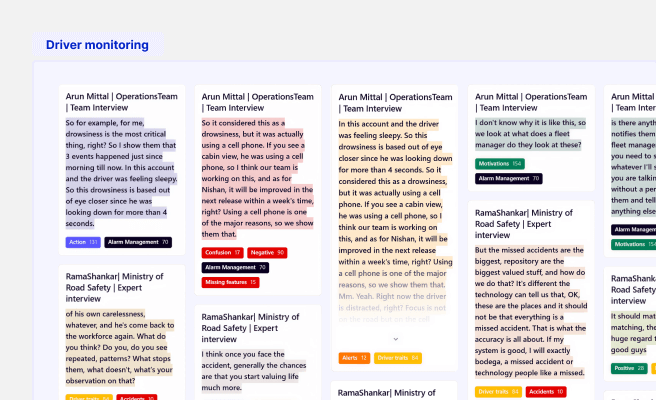Risk Management
<p>Risk management is a systematic process used by organizations to identify, assess, and control potential threats to their capital and earnings. These risks could stem from various sources including financial uncertainties, legal liabilities, strategic management errors, accidents, and natural disasters.</p>
<p>Historically, risk management has evolved from a simple insurance-buying process to a sophisticated, comprehensive strategy that impacts decision-making across all levels of an organization. As industries become more complex and interconnected, effective risk management becomes crucial to maintaining stability and achieving long-term goals.</p>
<h2>Components of Risk Management</h2>
<p>The risk management process involves several key components:</p>
<ul>
<li><b>Risk Identification:</b> This is the first step where potential risks are identified. This could be through brainstorming sessions, checklists, or analysis of historical data.</li>
<li><b>Risk Assessment:</b> Once identified, each risk is assessed to determine its potential impact and likelihood of occurrence. This is often done using qualitative and quantitative methods.</li>
<li><b>Risk Mitigation:</b> After assessing the risks, organizations develop strategies to mitigate them. This could involve avoiding the risk, transferring it (e.g., through insurance), reducing its impact, or accepting it.</li>
<li><b>Risk Monitoring:</b> Risks and their mitigation strategies need to be continuously monitored. This involves regular review and updating of the risk management plan.</li>
</ul>
<h2>Benefits of Risk Management</h2>
<p>Effective risk management brings numerous benefits to an organization:</p>
<ul>
<li><b>Protects Financial Stability:</b> By identifying and mitigating risks, organizations can protect themselves from significant financial losses.</li>
<li><b>Enhances Decision-Making:</b> Understanding potential risks allows leaders to make better-informed decisions.</li>
<li><b>Improves Operational Efficiency:</b> Risk management can help optimize processes and reduce inefficiencies.</li>
<li><b>Increases Stakeholder Confidence:</b> Demonstrating a proactive approach to risk management can build trust with investors, customers, and employees.</li>
</ul>
<h2>Challenges in Risk Management</h2>
<p>While risk management is crucial, it comes with its own set of challenges:</p>
<ul>
<li><b>Complexity:</b> As organizations grow and diversify, the complexity of managing risks increases.</li>
<li><b>Resource Intensive:</b> Effective risk management requires significant time and resources.</li>
<li><b>Human Factors:</b> Risk management relies on human judgment and skills, which can sometimes be flawed.</li>
<li><b>Rapid Changes:</b> The business environment is constantly evolving, making it challenging to keep risk management practices up to date.</li>
</ul>
<h3>Overcoming Challenges</h3>
<p>Organizations can adopt several strategies to overcome these challenges:</p>
<ul>
<li><b>Adopt Technology:</b> Using risk management software and tools can streamline processes and provide real-time insights. Tools like <a href="https://www.erminsightsbycarol.com/enterprise-risk-management-software-tools/" style="color:#2896FF; text-decoration:underline;">ERM software</a> can be particularly useful.</li>
<li><b>Continuous Training:</b> Regular training sessions can ensure that employees are aware of the latest risk management practices and techniques.</li>
<li><b>Leverage Data Analytics:</b> Data analytics can provide deeper insights into potential risks and help in making more accurate assessments.</li>
<li><b>Engage Experts:</b> Hiring or consulting with risk management experts can bring in valuable external perspectives.</li>
</ul>
<h3>Case Study: Risk Management in Climate Tech</h3>
<p>Let's consider a climate tech company specializing in carbon capture technology. The company faces several risks including technological failures, regulatory changes, and market competition. By implementing a robust risk management strategy, they are able to:</p>
<ul>
<li><b>Identify Risks:</b> Regularly conduct risk assessments to identify new and emerging risks.</li>
<li><b>Assess and Prioritize:</b> Use qualitative and quantitative methods to assess the impact of these risks and prioritize them.</li>
<li><b>Develop Mitigation Plans:</b> Create strategies to mitigate high-priority risks, such as investing in R&D to improve technology reliability and engaging with regulators.</li>
<li><b>Monitor Continuously:</b> Implement a system for continuous monitoring and updating of the risk management plan.</li>
</ul>
<p>This approach not only helps in safeguarding the company’s operations but also builds credibility with investors and partners, demonstrating their commitment to proactive risk management.</p>
<h2>Conclusion</h2>
<p>Risk management is an essential component of modern business strategy. By identifying, assessing, and mitigating risks, organizations can protect their financial stability, enhance decision-making, and improve operational efficiency. Despite challenges, adopting technology, continuous training, data analytics, and expert engagement can significantly enhance the effectiveness of risk management practices. For more insights on improving your risk management strategies, <a href="https://hbr.org/topic/risk-management" style="color:#2896FF; text-decoration:underline;">learn more here</a>.</p><p>Increase user engagement that converts your demos into sales. Optimise your UX strategies with our audits.
<p>Fill out the <a href="https://tally.so/r/n97pxQ" style="color:#2896FF; text-decoration:underline;">UX Audit form</a> to get started. Ready to discuss your needs? <a href="https://cal.com/akhilak/what-if-design?duration=25" style="color:#2896FF; text-decoration:underline;">Book a consultation call</a> with us today.</p></p>

Let's scale your impact with great design.
Free consultation, no sales pitch
Thank you! Your submission has been received!
Oops! Something went wrong while submitting the form.
Let’s talk
Nothing great is built alone.
Let’s connect about your vision, our work and how we can collaborate.
Get in touch

